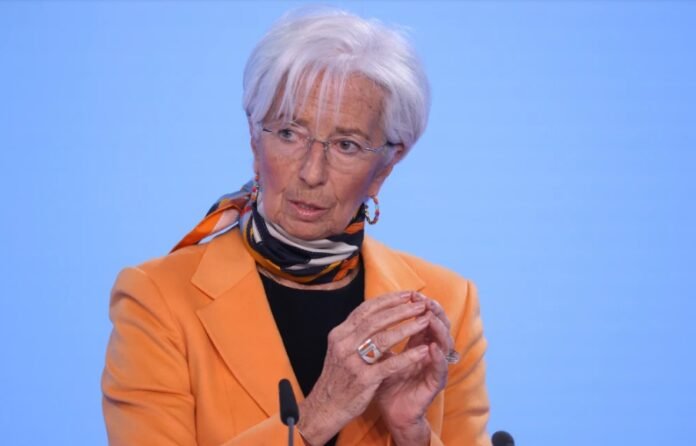As artificial intelligence (AI) continues to transform industries and economies around the world, its potential to create widespread change is undeniable. AI promises to revolutionize everything from healthcare and education to financial services and manufacturing. But as the European Central Bank (ECB) President Christine Lagarde recently warned, AI also presents significant risks, particularly when it comes to exacerbating inequality.
Lagarde’s comments, made during a speech on the future of digital economies, reflect growing concerns about the potential side effects of AI’s rapid development and integration into various sectors. While AI holds immense promise for innovation and economic growth, Lagarde emphasized that if not carefully managed, the rise of AI could leave certain groups and regions in Europe further behind.
The Promise of AI: Revolutionizing Economies
The appeal of AI lies in its ability to process vast amounts of data, identify patterns, and make decisions at a speed and scale that surpasses human capabilities. For businesses, this translates into improved efficiencies, cost reductions, and the ability to develop new products and services. Governments, too, see AI as a tool for better public service delivery and more effective governance.
In Europe, AI has already been integrated into various industries, from finance, where algorithms drive trading and risk assessments, to healthcare, where AI models are used to diagnose diseases and recommend treatments. With the potential for AI to increase productivity and streamline operations, many see it as a critical driver of future economic growth.
However, these benefits are not distributed equally across the population or across European countries. As Lagarde pointed out, there is a real risk that AI could deepen the gap between those who have the skills and resources to benefit from its advances and those who do not.
AI’s Role in Widening the Inequality Gap
One of the central concerns Lagarde raised is the unequal distribution of AI’s economic benefits. While larger, well-resourced companies and countries are investing heavily in AI, smaller businesses, especially those in less affluent regions, may struggle to keep up. The ability to harness AI requires not only significant capital but also a highly skilled workforce capable of designing, implementing, and maintaining AI systems. This creates a divide between regions and companies that have the resources to invest in AI and those that do not.
For example, multinational corporations with vast amounts of data and advanced infrastructure are likely to see AI as a powerful tool to further consolidate their market power. Meanwhile, small and medium-sized enterprises (SMEs), which are the backbone of many European economies, could find it difficult to adopt AI due to the high costs involved. Without the ability to compete in an AI-driven economy, these smaller firms may be left behind, leading to a concentration of wealth and power among the few.
In addition to businesses, Lagarde expressed concern over the impact of AI on labor markets. While AI has the potential to automate routine tasks and improve productivity, it also threatens to displace workers, particularly in sectors that rely on repetitive or manual labor. Jobs in manufacturing, retail, and even some areas of service could be at risk of automation, leaving many workers without a clear path forward.
As certain jobs become obsolete, the workers who lose their positions may face challenges in transitioning to new roles that require advanced digital and technical skills. Without proper education and retraining programs, the AI revolution could leave many individuals unemployed or underemployed, further widening the inequality gap.
A Divided Europe: The Digital Divide
Europe is already a continent marked by economic disparities. While countries like Germany, France, and the United Kingdom have well-established technological infrastructure and strong industries, many Eastern and Southern European nations still struggle with lower levels of digitalization. The rise of AI could exacerbate this divide, as wealthier, more technologically advanced countries benefit from the economic gains AI offers, while poorer countries fall further behind.
Lagarde’s warning is particularly pertinent in this context, as Europe’s economic recovery after the pandemic has been uneven. While some countries have managed to weather the storm better than others, the widespread adoption of AI could lead to even greater disparities between regions. Nations with less access to AI technology and fewer resources for workforce retraining may find themselves at a significant disadvantage, which could deepen regional inequalities within Europe.
Moreover, the digital divide is not limited to geography. It also manifests in access to education and training. Those with the skills to work in AI-driven industries, such as data science and machine learning, will have a distinct advantage, while those without these skills may find it difficult to secure employment. As AI becomes more ingrained in the economy, the demand for skilled workers will rise, leaving behind those who are unable to meet the new job requirements.
Addressing the Challenges: Lagarde’s Call for Action
Christine Lagarde is not alone in recognizing the potential risks AI poses to equality. Many economists, policymakers, and experts agree that while AI can unlock tremendous economic potential, its benefits must be shared more equitably. For this to happen, governments and institutions need to act proactively.
First, Lagarde stressed the importance of education and reskilling programs. If workers are to adapt to the changing job landscape, they must be equipped with the digital skills necessary to thrive in an AI-driven world. Governments should prioritize funding for digital literacy programs and vocational training to ensure that workers are not left behind as the labor market evolves.
Additionally, policymakers must consider ways to support small and medium-sized businesses in adopting AI. This could include providing financial incentives for AI adoption, offering grants for digital transformation, and ensuring that smaller companies have access to the tools and resources they need to remain competitive.
Finally, Lagarde called for a collaborative approach to AI regulation. As AI becomes more pervasive, it is essential that its development and deployment are guided by ethical considerations that prioritize social welfare and equality. This includes creating frameworks that protect workers from displacement, ensuring that AI technologies do not perpetuate bias, and promoting inclusivity in the digital economy.
Conclusion: A New Era of Innovation or Inequality?
The rise of AI presents both an opportunity and a challenge for Europe. On one hand, AI has the potential to drive unprecedented innovation and economic growth. On the other, if not carefully managed, it could lead to greater inequality, as the benefits of this new technology are concentrated in the hands of the few.
Christine Lagarde’s warning serves as a timely reminder that the AI revolution should not be viewed as a panacea for all economic problems. If Europe is to embrace AI and harness its full potential, it must do so in a way that promotes inclusivity, safeguards against job displacement, and ensures that the economic benefits are shared across all regions and demographic groups.
In this new era of technological change, the task will be to ensure that AI’s promise of progress does not leave anyone behind, particularly those who are already at risk of being marginalized in an increasingly digital world. By addressing these challenges head-on, Europe can ensure that AI becomes a force for good, rather than a source of division.




